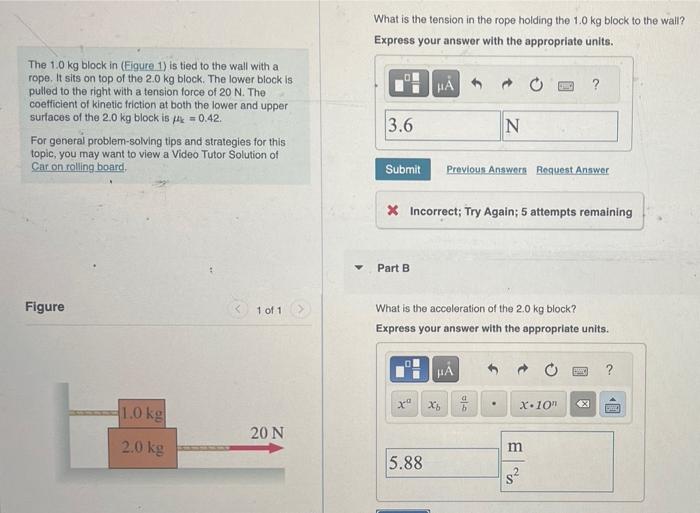The 1.0 kg block in (Figure 1) is tied to the wall with a rope, It sits on top of the 2.0 kg block. The lower block is pulled to the right with a tension force of 20 N. The coefficient of kinetic friction at both the lower and upper surfaces of the 2.0 kg block is μk = 0.42. For general problem-solving tips and strategies for this topic, you may want to view a Video Tutor Solution of Car on rolling board. Figure 1 of 1 What is the tension in the rope holding the 1.0 kg block to the wall? Express your answer with the appropriate units. Part B What is the acceleration of the 2.0 kg block? Express your answer with the appropriate units.
